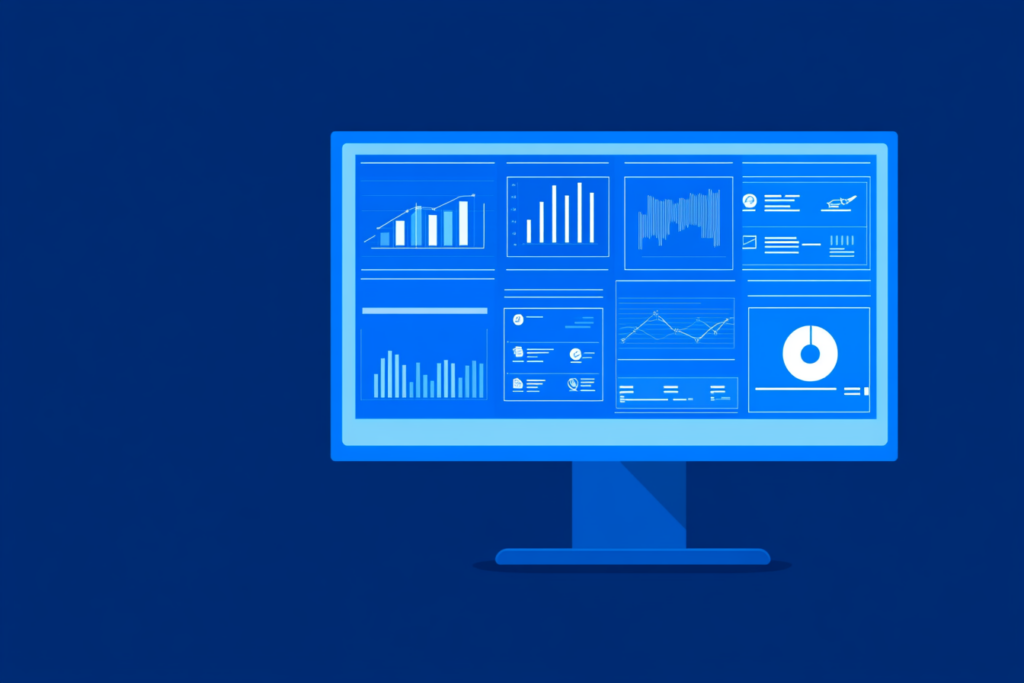You have likely heard the phrase “Minimum Viable Product” or MVP often in today’s fast-paced start-up and tech world. So, what exactly is an MVP? In essence, it is a new product version with only those features that you consider essential for early traction and initial user feedback to shape the future development of your idea. An MVP gives companies the chance to test-drive their ideas on the market, reduce costs, and minimize risks before an actual launch.
This article explains how to build an MVP and why employing such methods is beneficial. We will also show off some awesome real MVP examples to help you start your journey.
What is MVP in Business?
The minimum viable product (MVP) is a cornerstone of entrepreneurship and product development. MVP, by definition, is testing a business idea with minimum resources. For startups, it helps them get started before they take the plunge, allowing for valuable user feedback while keeping engineering costs to a minimum.
The concept of an MVP comes from the Lean Startup methodology, where rapid prototyping and testing are used. The idea is to make a product with minimal features that can help validate your vision. Things to consider about an MVP for startup businesses include:
-
Test market demand: You can check if a niche exists for your product before developing it to completion.
-
Collect user feedback: Users give feedback that can direct the next revisions, leading to a more efficient final product.
-
Save time and resources: Startups should focus their resources on things that matter most. An MVP helps determine this.
Startups are more likely to succeed if they can take small or partial steps that don’t require major development. We have data that backs this statement, too. The Harvard Business School found that 34% of startups are more likely to fail if they don’t listen to their users and don’t find the right Product-Market Fit.
You’ve probably heard about two other approaches to building your product: PoC and Prototypes. They might seem almost the same. But believe it or not, they are completely different. To find out the difference between MVP, PoC, and Prototype, follow the link to the article.

How to Build a Minimum Viable Product
Creating a Minimum Viable Product (MVP) is a structured approach that, if executed correctly, involves planning at several levels. Below is a detailed step-by-step guide for how to build an MVP, including insights that help you widen your sight through the process.
Step 1: Identify the Problem
Your MVP only succeeds if you solve a problem that your target audience really has. During this step, you must conduct hours of research and analysis to determine if your product will solve a real problem.
Techniques for Problem Identification:
-
Customer Discovery Interviews: Conduct interviews with potential users to gather qualitative data on their pain points. Use open-ended questions to get detailed responses and analyze the findings via thematic analysis for common patterns.
-
Surveys and Questionnaires: Utilize tools like Google Forms or Typeform to create surveys targeting your user demographic. Design questions that follow the Likert scale (e.g., 1 to 5) to quantify user sentiments regarding specific problems.
-
Competitive Analysis: Perform a SWOT analysis (Strengths, Weaknesses, Opportunities, Threats) of competitors to understand what problems they are addressing and where gaps exist in their offerings. This analysis can help you position your MVP effectively.
For example, if you are developing a telehealth platform, interviews may reveal that users struggle with appointment scheduling and wait times, which are critical pain points to address.

Step 2: Define Your Target Audience
After pinpointing the core issue, it’s crucial to accurately identify your ideal users. A thorough grasp of your user base empowers you to create your MVP to address their unique requirements effectively.
Creating User Personas:
-
Demographic Analysis: Collect data on age, gender, job roles, education, and location using resources like Facebook Audience Insights or Google Analytics.
-
Psychographics: Dive deep to uncover users’ motivations, patterns, and areas of frustration. Tools like SEMrush or Ahrefs can help in analyzing online behavior and preferences.
-
User Journey Mapping: Visualize a typical user’s steps while interacting with a product or service to uncover possible hurdles in their experience.
Tools for Audience Research:
-
Customer Relationship Management (CRM) Systems: Use systems like HubSpot or Salesforce for effective customer data analysis and audience segmentation.
-
Behavioral Analytics Tools: Platforms such as Mixpanel or Hotjar offer valuable data on user interactions, helping you understand potential users’ behavior patterns.
Step 3: Outline Core Features
With a firm grasp of both the problem and your target users, you can outline your MVP’s essential features. This stage focuses on identifying the core functionalities that cater directly to users’ needs.
Feature Prioritization Strategies:
MoSCoW Method:
The MoSCoW framework is a popular prioritization technique for managing project requirements, especially in MVP development. It categorizes features into four levels:
-
Must-Have: These are non-negotiable features crucial to the MVP’s basic operation.
-
Should-Have: Important enhancements that elevate user experience but aren’t required at the outset.
-
Could-Have: Additional beneficial but not essential features suitable for later integration.
-
Won’t-Have: Features beyond the current scope, which may be revisited in future updates.
Kano Model: This approach organizes features by their influence on user satisfaction, sorting them into categories such as:
-
Basic Needs: Essential elements that users expect and find lacking if absent.
-
Performance Needs: Features that heighten user satisfaction as they become more refined.
-
Excitement Needs: Unexpected features that can pleasantly surprise users, adding to their engagement.
For example, in a project management app, primary functionalities might encompass task delegation, deadline management, and team collaboration as “must-haves.” Meanwhile, more specialized capabilities like detailed analytics could fall under “could-have” features.

Step 4: Design the User Experience (UX)
Building a powerful and enjoyable user experience is essential to ensure users embrace your MVP. This step zeroes in on designing intuitive interfaces that encourage smooth interaction.
Key Aspects in Crafting UX Design:
-
Simplicity: Design a clean, straightforward layout that minimizes the mental work users need to process. Drawing on principles like those from Gestalt psychology can help create a natural and easy-to-navigate layout.
-
Accessibility: Ensure your design reaches everyone by following the Web Content Accessibility Guidelines (WCAG). Adding descriptive text for images and enabling keyboard access, for example, can make the product more inclusive.
-
User Feedback Channels: Build easy ways for users to share their insights—perhaps with built-in surveys or suggestion boxes so that feedback can be gathered and improvements can continue.
Tools for Prototyping:
-
Figma: This tool supports collaborative design, enabling team members to view and adjust prototypes in real time. With Figma, you can create interactive models to visualize user flow and get early feedback.
-
Adobe XD: Perfect for creating wireframes and polished prototypes, Adobe XD lets you build designs that feel real and allows user testing to ensure the layout resonates well.
Step 5: Development Strategy
Now that you have your designs in hand, it’s time to establish a robust development plan. This implies selecting the right tools and tech stack that effectively aligns with your MVP needs.
Choosing a Development Methodology:
-
Agile Development: Using Agile methods such as Scrum or Kanban may be appropriate if you need high flexibility. Agile works through short development periods, or “sprints,” followed by regular feedback sessions, allowing for easier continuous improvement.
-
Lean Startup: This methodology focuses on rapid prototyping and validating hypotheses through real-world testing. Lean emphasizes the Build-Measure-Learn feedback loop that helps you validate ideas fast.
Selecting a Technology Stack:
-
Frontend Development: Robust frameworks improve user experience and increase development speed. Some popular options include:
-
Backend Development: Select a scalable backend technology that can accommodate growth:
-
Database Choices: Choose a database that suits your data requirements:
-
MongoDB: This NoSQL database can be useful with unstructured data, bringing flexibility and fast iterations.
-
PostgreSQL: A powerful open-source relational database that is great for running complex queries and supports complex data types. It is another great option for structured data.
-
Team Composition:
-
Ensure that your development team has a mix of skills. They are frontend and backend developers, UX/UI designers, and quality assurance testers. This diverse skill set enables efficient collaboration and faster iterations.
Step 6: Build and Launch
Now that you have a plan, you can build your MVP. This requires a framework for development and a launch strategy to carry the project into production.
Development Process:
-
Agile Sprints: Break the development process into 1–2 week sprints, each focused on delivering certain features. Conduct sprint planning and review meetings to align and be accountable.
-
Continuous Integration/Continuous Deployment (CI/CD): Implement CI/CD pipelines using tools like Jenkins or GitHub Actions to automate testing and deployment. This allows for a smooth iteration cycle while keeping a consistent and stable codebase.
Testing Before Launch:
-
User Acceptance Testing (UAT): Test it with actual users to confirm that the MVP is working properly and is user-friendly. Gain an understanding of their experience and tweak as necessary prior to the official rollout.
Launch Strategy:
-
Soft Launch: Consider a soft launch to a selected group of users, allowing you to gather initial reactions and make tweaks before a full-scale rollout.
-
Marketing Strategy: Develop a marketing strategy to create buzz around your MVP. Use social media, email marketing, and content marketing channels to communicate with your target audience.

Step 7: Gather Feedback and Iterate
Once your MVP is live, collecting user feedback is key. It will help you know what works for your product, what doesn’t, and how to improve it.
Methods for Collecting Feedback:
-
In-App Surveys: Use apps like Typeform or SurveyMonkey to get structured feedback related to user experiences or feature requests.
-
Behavioral Analytics Tools: Use solutions like Google Analytics or Mixpanel to understand user behavior and engagement metrics. How users interact with your MVP can tell you what features bring the most value.
Iterating Based on Feedback:
-
Data Analysis: Analyze the feedback and build necessary changes based on the analytics done on the data. Use feedback from users to create a roadmap for your next iterations.
-
A/B Testing: Use A/B tests for new features or changes to see if they help improve user satisfaction. Such a data-driven approach allows them to validate that any modifications result in the agreed-upon improvement.
Example of Iteration: If users consistently report that a particular feature is confusing, emphasize a redesign or explanation. Doing this will ensure that your product suits the user’s needs.
We’ve reviewed the major stages to build an MVP. The next question is how to move on to launching your full-scale app. Here is a detailed guide where the experts of LITSLINK share secrets on how to start a mobile business that will succeed.
Key Benefits of a Minimum Viable Product
Implementing an MVP for startup companies offers many advantages, including:
-
Faster Time to Market: Building only the necessary features helps you get your product out sooner to take advantage of market opportunities.
-
Cost-Effectiveness: Building an MVP minimizes development costs, reducing financial risk. You can allocate resources more efficiently by avoiding unnecessary features.
-
User Feedback Integration: The feedback and comments you get from the early tuned-up users will help you decide your next course of action for your future versions and help you have the right product-market fit.
-
Risk Reduction: MVPs help identify potential pitfalls early in the development process, allowing you to pivot or adjust your strategy before investing heavily.
So, the benefits of an MVP are clear, and many big companies know them and actively use MVPs in their processes. We’ll take a peek at these companies in the next section.
Real-World Examples of MVPs
To shed more light on what an MVP is, let us briefly examine some real-world MVP examples that have succeeded.
Case Study 1: Dropbox
Dropbox is a classic example of using an MVP to validate a concept before fully building it out. Instead of implementing the entire platform, the founders of Dropbox prepared a simple demo video demonstrating how the product would function. They posted this video on tech forums and received responses, which they used to iterate on their concept.
Such an MVP business model enabled Dropbox to test the waters and raise enough funds to launch one of the world’s most successful file-storing and sharing platforms.
Case Study 2: Airbnb
Airbnb’s founders initially offered air mattresses in their apartments during a conference. They put together a basic website to advertise their service; in other words, they built an MVP for the idea of renting out a home.
This proof of concept MVP created sufficient early-stage traction to validate their idea—and turned into a multi-billion dollar hospitality business.
Case Study 3: Instagram
Instagram started as a location-based check-in app. The founders discovered that the product was being used as a photo-sharing feature, so they pivoted and went all in on that functionality. That stripped-down version was Instagram, and it quickly took off.
Case Study 4: Zocdoc
Zocdoc, an online platform for booking medical care appointments, started with a simple MVP: an online form for booking local doctor appointments. Founders collected data on user actions and preferences, using what they learned to develop more advanced features.
Takeaways
Creating a minimum viable product is a calculated step that startups and businesses take to validate their ideas, reduce risks, and receive priceless user feedback. In today’s competitive business environment, building an MVP is not only good practice; it is mandatory for future success.
So, what are you waiting for? Get started on your MVP today and take that first step in turning your idea into reality! Our team of software engineers, with years of experience and a long list of successful projects, is ready to help you build your successful MVP. Hit us up anytime!





